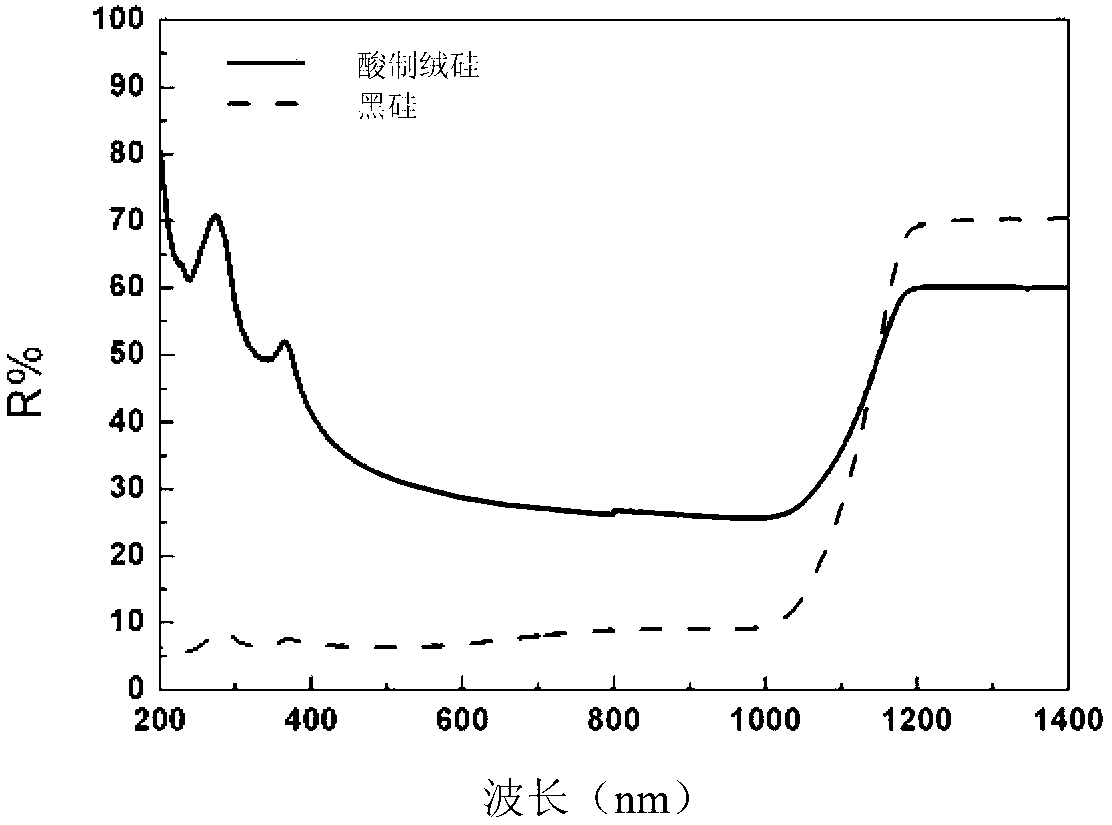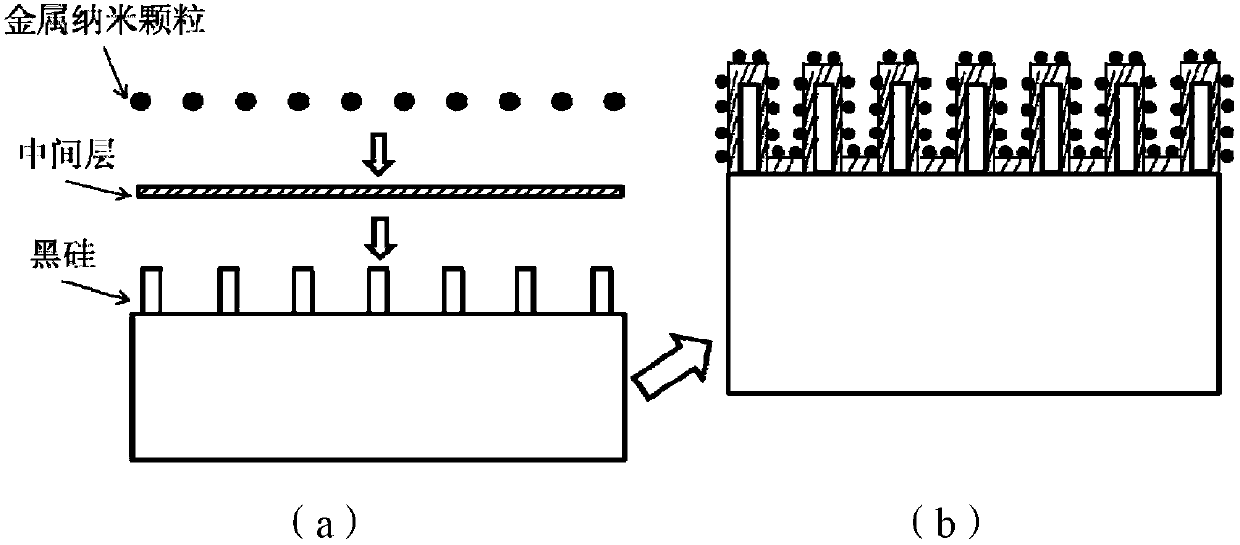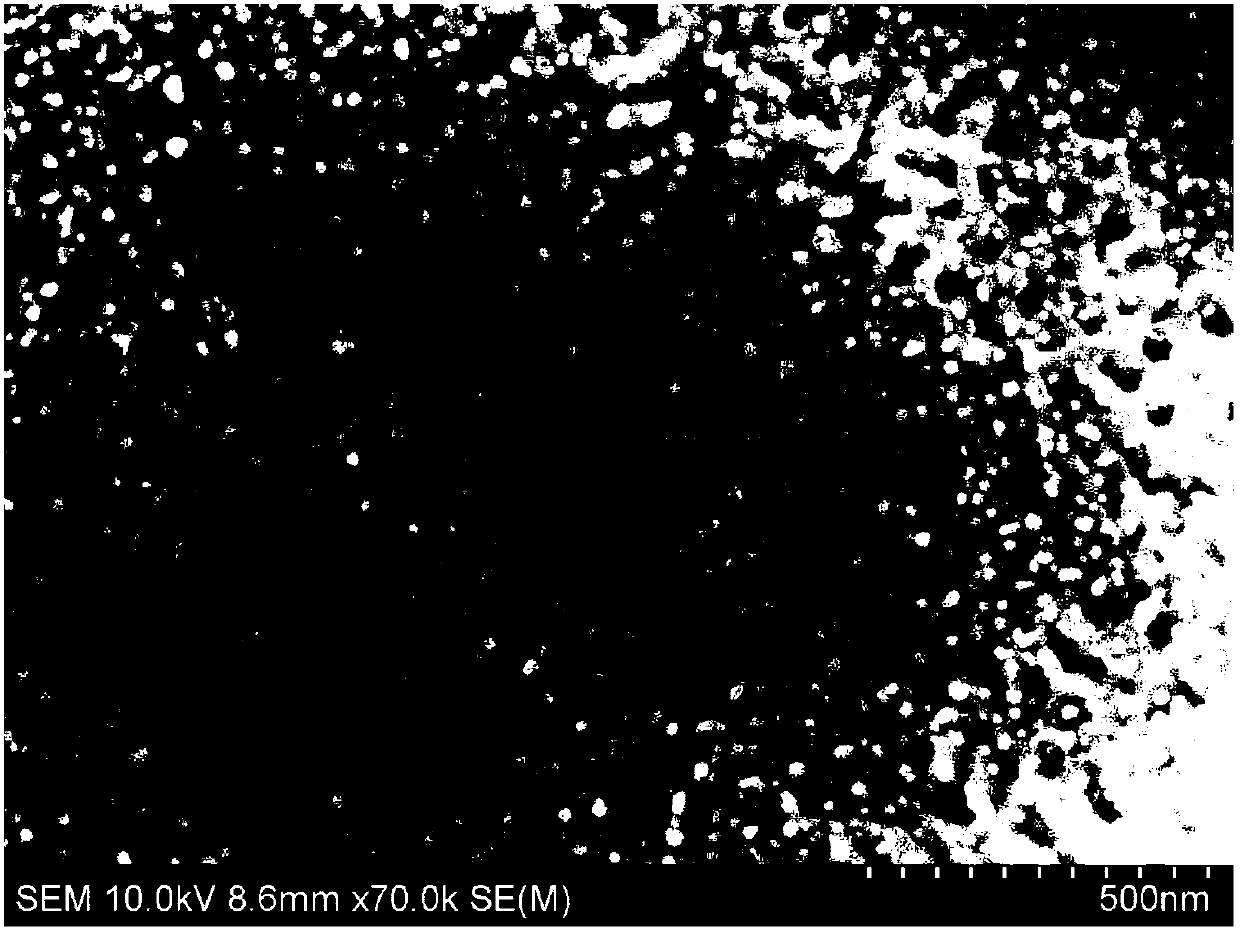Method for reducing reflection of black silicon in wide band scope
A wide-band, anti-reflection technology, applied in sustainable manufacturing/processing, electrical components, climate sustainability, etc., to achieve low-cost, anti-reflection, and low-reflection effects
- Summary
- Abstract
- Description
- Claims
- Application Information
AI Technical Summary
Problems solved by technology
Method used
Image
Examples
Embodiment 1
[0040] This embodiment provides a method for reducing the reflectivity of silicon wafers in a wide spectral range, including:
[0041] 1) Perform surface isolation and protection treatment on black silicon with nano-column structure, and deposit 30nm thick SiN on its surface by PECVD (that is, plasma chemical vapor deposition method) x middle layer;
[0042] 2) On the black silicon surface after the intermediate layer is prepared, Ag with a thickness of 5nm is deposited by thermal evaporation to obtain discontinuous Ag metal particles (above step 1) and 2) are reflected in image 3 a);
[0043] 3) Put the sample into an annealing furnace, blow nitrogen, and anneal at 200°C for 30 minutes to obtain Ag metal nanoparticles with more regular shape and uniform distribution, and the average diameter of Ag metal nanoparticles is about 25nm.
[0044] The schematic diagram of the black silicon-based surface plasmon wide-band anti-reflection structure obtained after the above steps is...
Embodiment 2
[0048] This embodiment provides a method for reducing the reflectivity of silicon wafers in a wide spectral range, including:
[0049] 1) Perform surface isolation protection treatment on black silicon with nanowire structure, and deposit 25nm thick SiN on its surface by PECVD x middle layer;
[0050] 2) On the black silicon after the intermediate layer was prepared, Ag with a thickness of 10nm was deposited by thermal evaporation to obtain discontinuous Ag metal particles;
[0051] 3) Put the sample into an annealing furnace, blow nitrogen, and anneal at 150°C for 20 minutes to obtain Ag metal nanoparticles with more regular shape and uniform distribution, and the average diameter of Ag nanoparticles is about 30nm.
[0052] The SEM topography of the black silicon-based surface plasmon broadband anti-reflection structure obtained after the above steps is as follows Figure 7 shown. Figure 8 It is the reflectance spectrum of the polycrystalline silicon chip after the acid t...
Embodiment 3
[0054] This embodiment provides a method for reducing the reflectivity of silicon wafers in a wide spectral range, including:
[0055] 1) Carry out surface isolation and protection treatment on black silicon with nanoporous structure, and obtain SiO with a thickness of about 15nm after ozone oxidation for 30 minutes 2 middle layer;
[0056] 2) On the black silicon after the intermediate layer was prepared, Ag with a thickness of 10nm was deposited by thermal evaporation to obtain discontinuous Ag metal particles;
[0057] 3) Put the sample into an annealing furnace, and after vacuuming, anneal at 250°C for 60 minutes to obtain Ag metal nanoparticles with more regular shape and more uniform distribution.
[0058] The SEM topography of the black silicon-based surface plasmon wide-band anti-reflection structure obtained after the above steps is as follows: Figure 9 shown.
PUM
| Property | Measurement | Unit |
|---|---|---|
| thickness | aaaaa | aaaaa |
| thickness | aaaaa | aaaaa |
| diameter | aaaaa | aaaaa |
Abstract
Description
Claims
Application Information
 Login to View More
Login to View More - R&D
- Intellectual Property
- Life Sciences
- Materials
- Tech Scout
- Unparalleled Data Quality
- Higher Quality Content
- 60% Fewer Hallucinations
Browse by: Latest US Patents, China's latest patents, Technical Efficacy Thesaurus, Application Domain, Technology Topic, Popular Technical Reports.
© 2025 PatSnap. All rights reserved.Legal|Privacy policy|Modern Slavery Act Transparency Statement|Sitemap|About US| Contact US: help@patsnap.com



